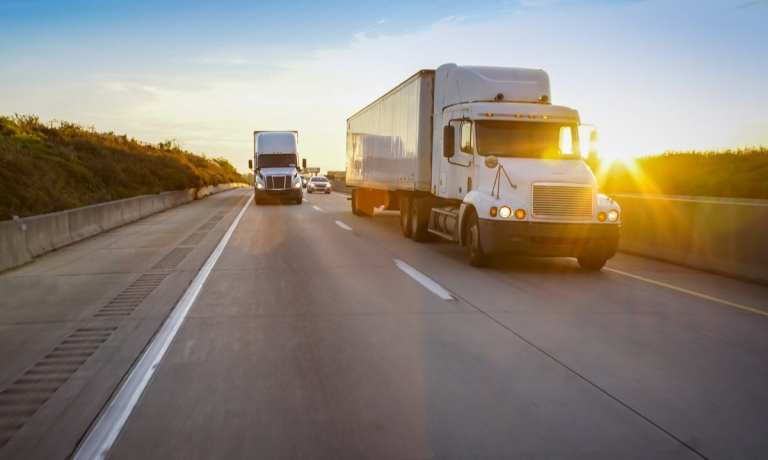Trucking’s Downturn, Paycheck to Paycheck Pressures Signal Recession May Be Here

Connect enough data points, and the mosaic offers up a portrait of recession.
Depending on where you look — earnings reports, management commentary, a slew of cautionary stats coming from the freight sector, even dragging demand for durable goods — a slowdown is imminent.
The wild card is whether the U.S. economy is in for a hard or soft landing.
Not all that long ago, shippers represented a microcosm of just how dislocated supply chains had become.
The mismatch of supply and demand and bumpy last-mile logistics meant capacity to get goods where they needed to go was at best limited and at worst non-existent.
You’re no doubt familiar with the $100,000-plus salaries dangled to hire, train and retain truckers. For example, earlier this month, Walmart announced that it would give pay raises to its drivers, and drivers in their first year with the company could make as much as $110,000.
Read more: Walmart Hikes Driver Pay, Launches Private Fleet Program
Rearview Mirror
Those halcyon days seem destined for the rearview mirror. Bank of America has signaled, in a note released earlier this month, that trucking demand has declined almost to “freight recession levels.” Triangulating data from its surveys on rates, inventory and capacity, we have not been here since the spring and early summer of 2020, when the pandemic’s savage economic impact became first evident. That means that capacity is higher than it has been since before the pandemic. Make a cold call, and it’s likely you’ll find a truck ready to load your pallets, and likely at favorable rates.
See more: Domestic Demand for Trucking Begins to Slip
Generally speaking, freight is not industry specific. No matter what’s winding up on shelves, in warehouses, even at your doorstep, trucks are part of the process of getting everything from shirts to lumber to food hither and yon.
Reuters reported Tuesday (April 26) that the trucking downturn may be a harbinger for the overall economy.
As for the other data points, the latest earnings results from UPS show that volumes declined in the United States. Average daily package volume was down 3.3% in the latest period from a year ago; ground delivery declined 3.2%.
The slowdown is not just a U.S. phenomenon — and it’s not limited to freight. As reported by the Financial Times, Heathrow Airport is warning that the huge upturn in travel is in a bubble phase that is unlikely to last (and at least some airlines are dialing back on flights). Whirlpool has cut its forecast on the heels of waning demand for big-ticket, durable items like dishwashers.
Inflation, then, is hitting sectors that just a few months ago seemed poised to ride a long, sustained wave of consumer spending.
The latest Connected Economy report’s data show that a majority of consumers — six in 10 of them — are buying only the most essential items they need as inflation continues its heady rise.
Read more: 6 in 10 Consumers Buying Only the Essentials as Inflation Rises
With a pullback in spending, it stands to reason that freight will continue to be impacted, that leisure travel will face pressures. A slippage/slowdown in economic activity — where producers throttle back on output to better match up with anticipated demand — may have seeds firmly planted in the here and now.